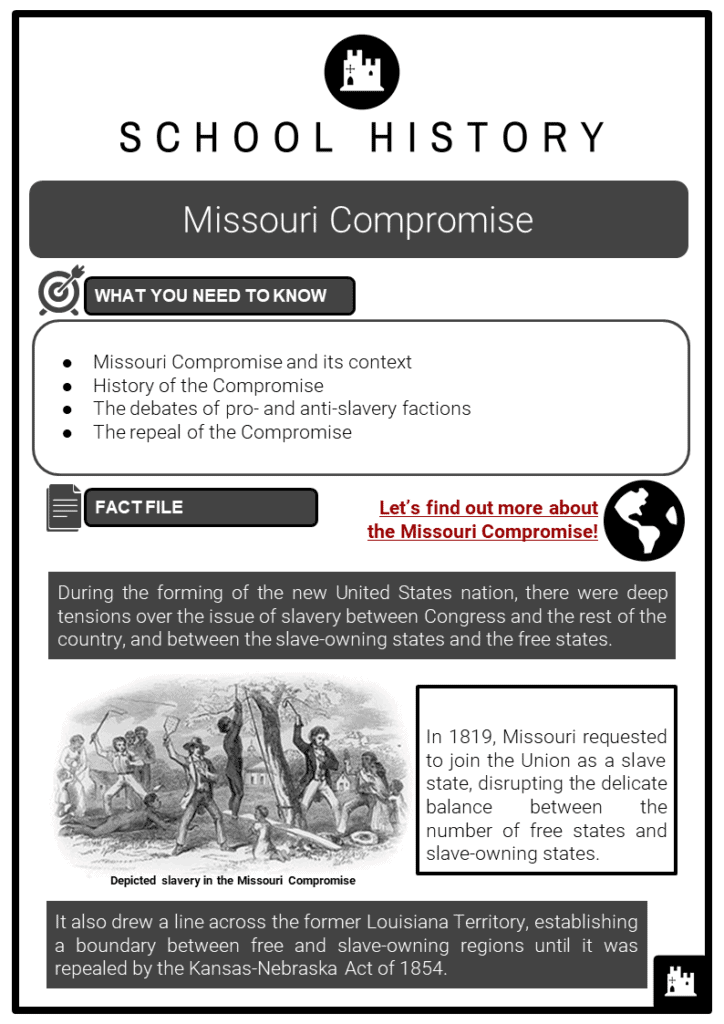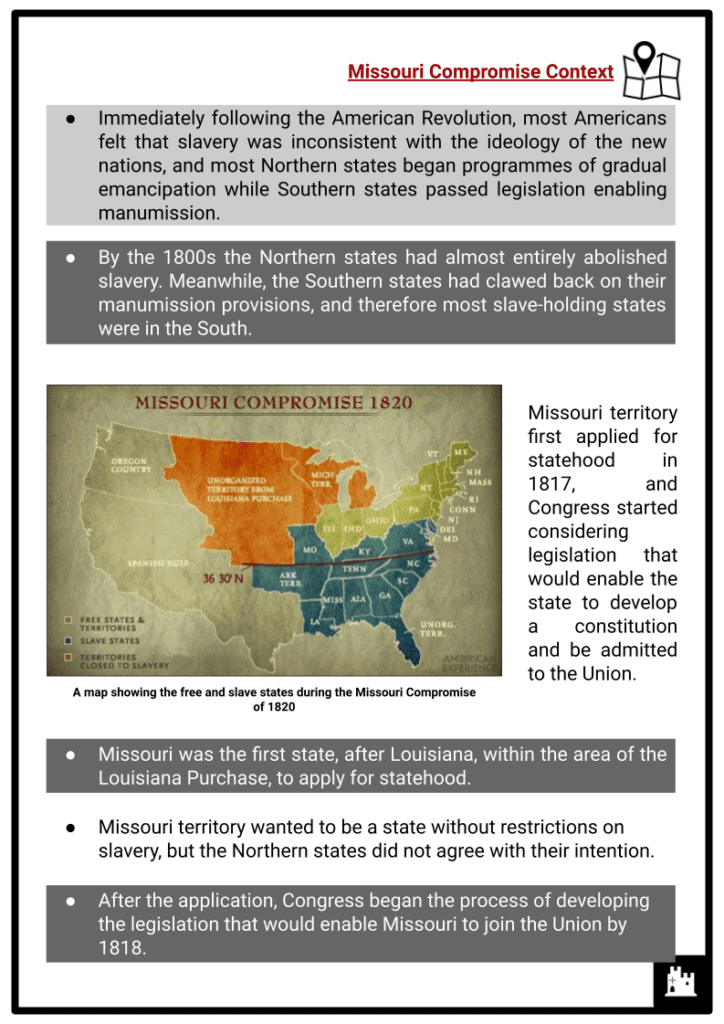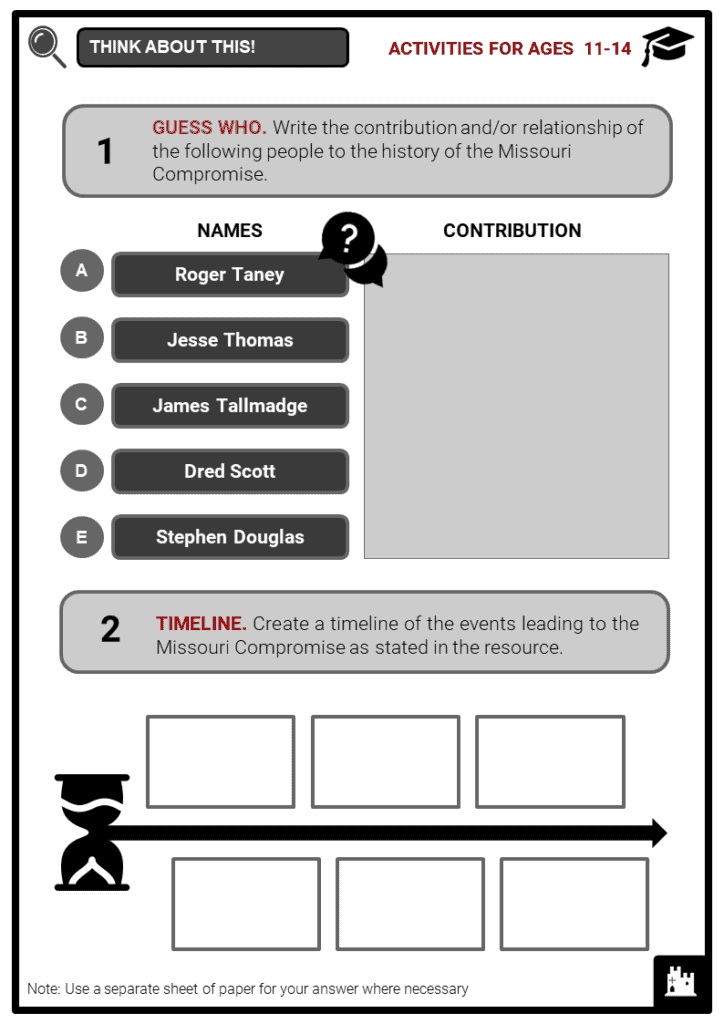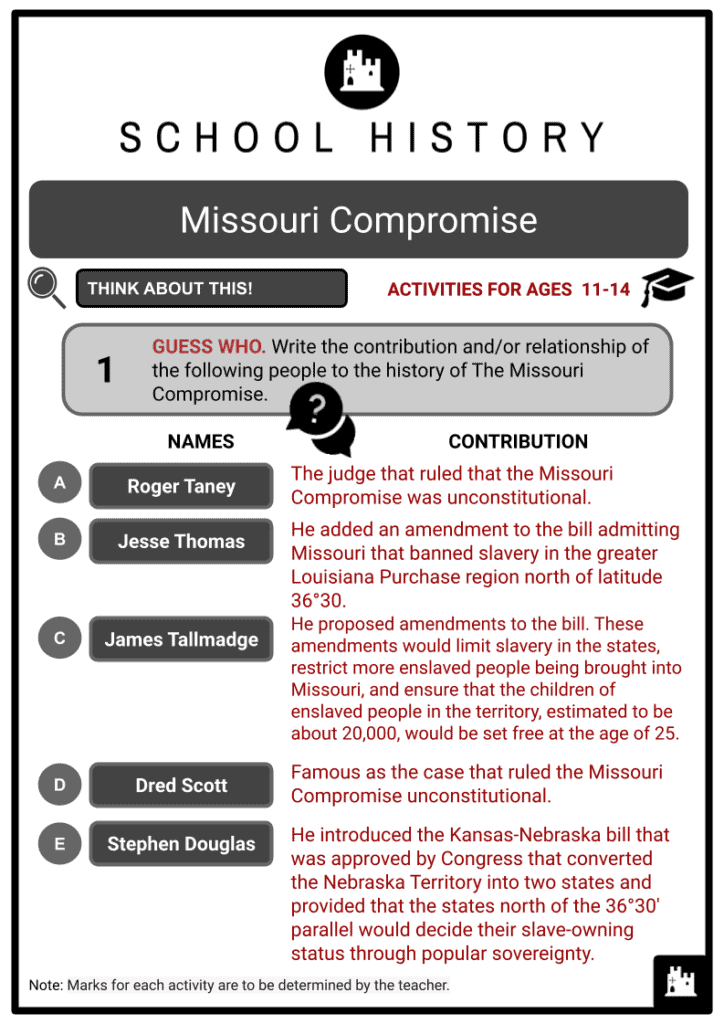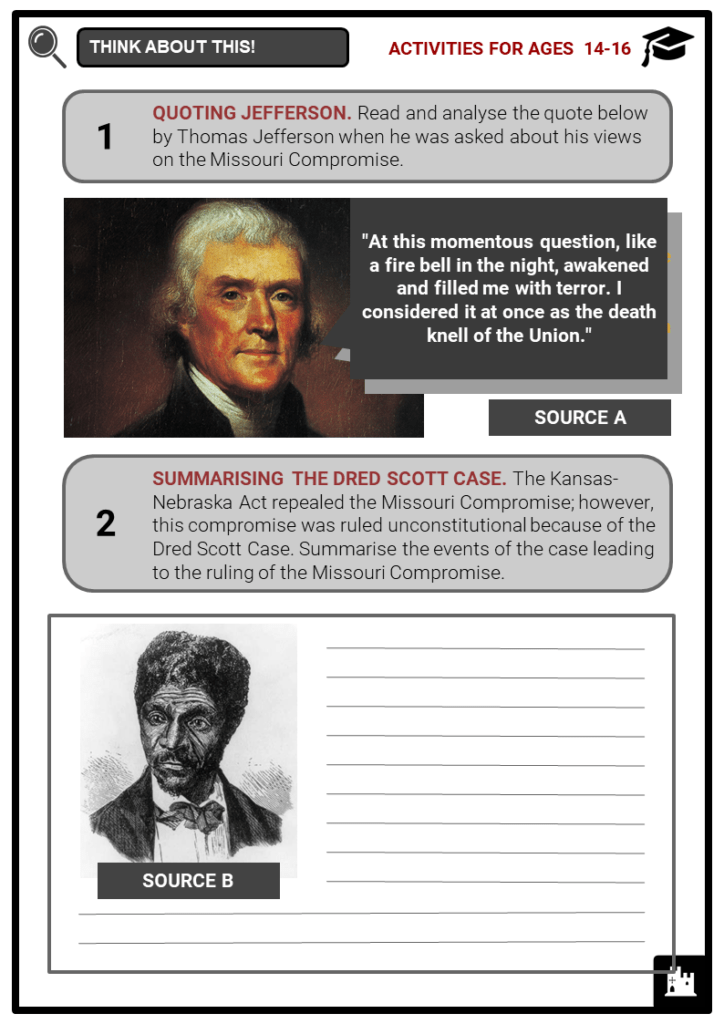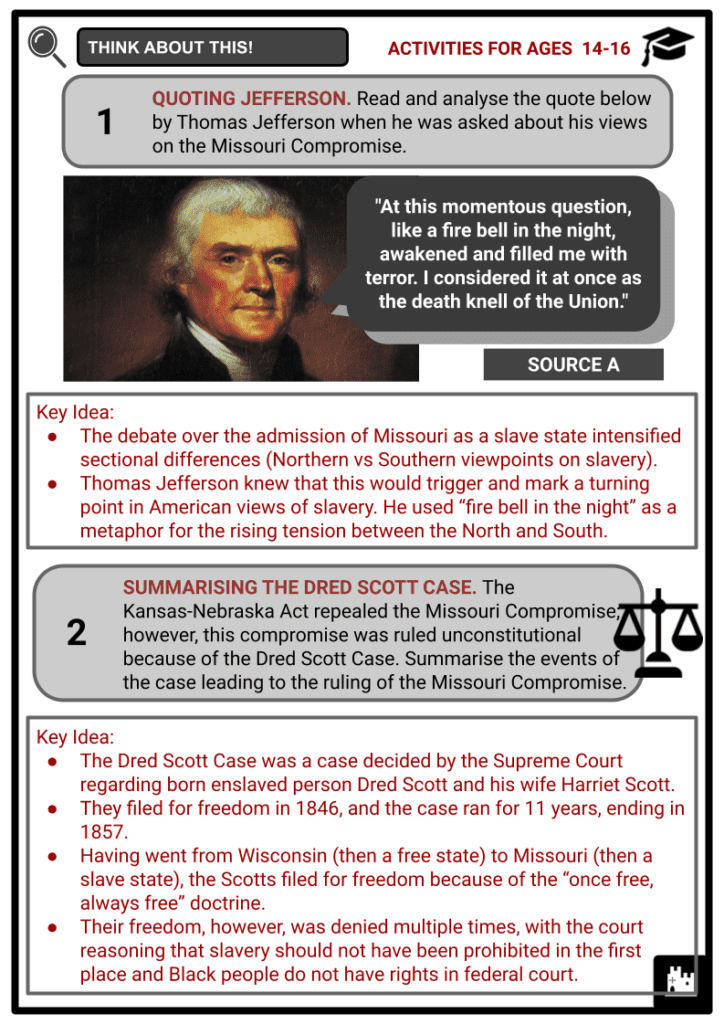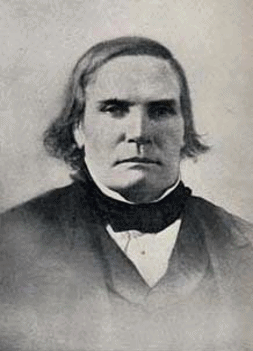Download Missouri Compromise Worksheets
Do you want to save dozens of hours in time? Get your evenings and weekends back? Be able to teach Missouri Compromise to your students?
Our worksheet bundle includes a fact file and printable worksheets and student activities. Perfect for both the classroom and homeschooling!
Table of Contents
Add a header to begin generating the table of contents
Summary
- Missouri Compromise and its context
- History of the Compromise
- The debates of pro- and anti-slavery factions
- The repeal of the Compromise
Key Facts And Information
Let’s find out more about the Missouri Compromise!
- During the forming of the new United States nation, there were deep tensions over the issue of slavery between Congress and the rest of the country, and between the slave-owning states and the free states.
- In 1819, Missouri requested to join the Union as a slave state, disrupting the delicate balance between the number of free states and slave-owning states.
- It also drew a line across the former Louisiana Territory, establishing a boundary between free and slave-owning regions until it was repealed by the Kansas-Nebraska Act of 1854.
Missouri Compromise Context
- Immediately following the American Revolution, most Americans felt that slavery was inconsistent with the ideology of the new nations, and most Northern states began programmes of gradual emancipation while Southern states passed legislation enabling manumission.
- By the 1800s the Northern states had almost entirely abolished slavery. Meanwhile, the Southern states had clawed back on their manumission provisions, and therefore most slave-holding states were in the South.
- Missouri territory first applied for statehood in 1817, and Congress started considering legislation that would enable the state to develop a constitution and be admitted to the Union.
- Missouri was the first state, after Louisiana, within the area of the Louisiana Purchase, to apply for statehood.
- Missouri territory wanted to be a state without restrictions on slavery, but the Northern states did not agree with their intention.
- After the application, Congress began the process of developing the legislation that would enable Missouri to join the Union by 1818.
- At this time, the US consisted of 22 states, evenly divided between free and slave-owning states.
- Northern states were worried that admitting Missouri as a slave state would tip the scales and set the precedent of Congressional approval on the expansion of slavery.
- New York Congressman James Tallmadge proposed amendments to the bill in 1819. Those amendments would limit slavery in the states, restrict more enslaved people being brought into Missouri, and ensure that the children of enslaved people in the territory, estimated to be about 20,000, would be set free at the age of 25.
- The House of Representative approved the bill with Tallmadge’s amendments, but the Senate rejected it and voted to have no restriction on slavery in Missouri.
- In the summer that followed, public opinion was mobilised in support of the Tallmadge proposal.
- Voting in Congress followed the interests of its representatives, as most in the House of Representatives were from Northern states, while the Southern states controlled the Senate.
- Congress was adjourned without concluding the matter.
- A genuine public opinion that slavery was no longer compatible with the new nation’s values was mixed with political expediency as most Federalist Party loyalists sought to use the slavery issue as a basis to galvanise support for their party.
- Another group of Federalist Party loyalists also lobbied support among Democrats for a compromise away from the Tallmadge amendment to frustrate efforts to revive the party.
The Compromise
- When Congress reconvened in 1819, Maine also made its application for statehood as a free state but was facing frustration from Southern states.
- The Senate allowed Maine to enter as a free state and Missouri without restrictions on slavery.
- Senator Jesse Thomas then added an amendment to the bill admitting Missouri that banned slavery in the greater Louisiana Purchase region north of latitude 36°30′.
- Henry Clay then skillfully orchestrated a compromise between, combining Senator Jesse and Congressman Tallmadge, by designing separate votes on the controversial issues. In March 1820 the House conclusively admitted Maine as a free state, and Missouri as a slave-holding state, and declared free soil in all western territories north of Missouri’s southern border.
- Later, during the Missouri constitutional convention, the state attempted to exclude formerly enslaved people from the immunities and privileges guaranteed by the US.
- The state was then again permitted to join the Union on the understanding that the clause would be interpreted in a manner that undermined the rights of US citizens.
- The Missouri Compromise was repealed by the Kansas-Nebraska Act (1854) and was declared unconstitutional in the Dred Scott decision of 1857.
- At the time of the Kansas-Nebraska Act, Congress was occupied by debates on the passage of the transcontinental railroad.
- Illinois Senator Stephen Douglas wanted it to pass through Chicago, and he needed the support of the Southern states.
- To achieve his objective, the Senator introduced the Kansas-Nebraska bill that was approved by Congress. It converted the Nebraska Territory into two states and provided that the states north of the 36°30′ parallel would decide their slave-owning status through popular sovereignty.
- The Act effectively repealed the Missouri Compromise and later, in the Dred Scott Case, Justice Roger Taney ruled that the Missouri Compromise was unconstitutional.
Image sources:

